World War II was the most brutal and costly conflict in history, involving more than 30 countries and causing deaths of tens of millions. This year marks the 70th anniversary since the end of the war and the victory of Chinese People's War of Resistance against Japanese Aggression (1937-45). Here we list films that recount history from different periods of time. 1940s Casablanca A scene from Casablanca. [Photo/Mtime] Casablancais a 1942 American romance directed by Michael Curtiz. Set during World War II, it focuses on an American expatriate Rick Blaine who is confronted with a difficult choice between love and social conscience. Rick Blaine is the proprietor of an upscale nightclub and gambling den "Rick's Café Américain" in Casablanca, Morocco, which attracts a varied clientele, including German officials, Italians, and refugees desperate to reach the still neutral America. He receives two "letters of transit" by accident which allow the bearer to travel freely around the German-controlled Europe and to neutral Portugal. Ilsa Lund, former love of Rick, walks into his establishment one day, accompanied by her husband Victor Laszlo, a renowned fugitive Czech Resistance leader. They need the letters to escape to America, where Laszlo could continue his fight. After learning why Ilsa left him without explanation, Rick's bitterness for her dissolves. He gives them the letters of transit and risks his life to help them escape. The film won three Academy Awards in 1943, including for Best Picture. 1950s The Bridge on the River Kwai A scene from The Bridge on the River Kwai.[Photo/Mtime] The Bridge on the River Kwaiis a 1957 World War II epic film directed by David Lean. The film was shot in present-day Sri Lanka, and the bridge in the film is located in Kitulgala, a small town in the west Sri Lanka. The movieopens in a Japanese prisoner-of-war camp in Burma in 1943, where a battle of wills is raging between camp commander Colonel Saito and British colonel Nicholson. Saito insists that Nicholson orders his men to build a bridge over the river Kwai, which Nicholson refuses because the Geneva Conventions exempt officers from manual labor. After setting his differences with Saito, for the sake of maintaining his men's morale, Nicholson co-operates to oversee his men's construction of the bridge while oblivious to a plan by the Allies to destroy it. On the final inspection, Nicholson spots the explosives placed by the Allies and brings it to Saito's attention. Seeing Allied commandos killed and shot mortally, Nicolson stumbles towards the detonator and collapses on the plunger, just in time to blow up the bridge and send the trainhurtling into the river below. The film won seven Academy Awards in 1957, including for Best Motion Picture, Best Director and Best Actor, and has been selected for preservation in the United States National Film Registry, whose mission is to preserve American film heritage. From Here to Eternity A scene fromFrom Here to Eternity. [Photo/Mtime] From Here to Eternityis a 1953 drama film directed by Fred Zinnemann based on the namesake novel by James Joyce, an American author known for his explorations of World War II and its aftermath. The picture deals with the aspirations and tribulations of three soldiers stationed on Hawaii in the months leading up to the attack on Pearl Harbor. It is 1941. Robert E. Lee Prewitt requests Army transfer and ends up at Schofield in Hawaii. His new captain, Dana Holmes, hears of his boxing prowess and is keen to get him to represent the company. However, Prewitt is adamant that he does not box anymore, for which Captain Holmes gets his subordinates to make his life a living hell. Meanwhile, Sergeant Warden starts seeing the captain's wife, who has a history of seeking external relief from her troubled marriage. Prewitt's friend Maggio has a few altercations with the sadistic stockade Sergeant "Fatso" Judson, and Prewitt begins to fall in love with social club employee Lorene. Unbeknownst to anyone, the Japanese bombing of Pearl Harbor looms in the distance. The title of the film comes originally from the poem "Gentleman-Rankers" by Rudyard Kipling, an English poet, about soldiers of the British Empire who had "lost way" and were "damned from here to eternity". The film won 8 Academy Awards in 1953, including for Best Picture, Best Director, and Adapted Screenplay. 1960s La Grande Vadrouille A scene from La Grande Vadrouille. [Photo/Mtime] La Grande Vadrouilleis a 1966 French comedy film directed by Gérard Oury. It tells a story of two ordinary Frenchmen helping the crew of a Royal Air Force bomber shot down over Paris. In the summer of 1941, over Nazi-occupied France, a Royal Air Force B17 Flying Fortress gets lost after a mission and is shot down over Paris by German flak. The crew, Sir Reginald, Peter Cunningham and Alan MacIntosh, parachute out over the city, where they run into and are hidden by a house painter, Augustin Bouvet, and the grumbling conductor of the Opéra National de Paris, Stanislas Lefort. Involuntarily, Lefort and Bouvet get themselves tangled up in the manhunt against the aviators led by Wehrmacht Major Achbach as they help the airmen escape to the free zone with the help of Resistance fighters and sympathizers. For over 40 years, La Grande Vadrouille was the most successful French film in France. Where Eagles Dare A scene from Where Eagles Dare. [Photo/Mtime] Where Eagles Dareis a British 1968 World War II action film directed by Brian G. Hutton. It centers upon a daring rescue and an even more daring escape. Several months before D-Day, the British stage a daring rescue deep inside Germany. Led by British Major Jonathan Smith and an American, Lt. Morris Schaffer, their mission is to rescue American General George Carnaby whose airplane has been shot down over Germany. Carnaby, one of the architects of the D-Day invasion, is being held in the Schloss Adler, the Eagle's Castle, which is built high on a promontory and accessible only by cable car. The team successfully parachutes into Germany but losses their radioman in the jump and then a second member of the team within a day. Taken prisoner by the Germans, Smith's true mission is revealed: to uncover the identities of German spies operating in Britain. The film involves some of the top moviemaking professionals of the time and is considered a classic. Battle of the Bulge A scene from Battle of the Bulge. [Photo/Mtime] Battle of the Bulgeis a 1965 American widescreen epic war film directed by Ken Annakin. The film condensed a battle that stretched across parts of Germany, Belgium, and Luxembourg and lasted nearly a month into under three hours. In the winter of 1944, the Allied Armies stand ready to invade Germany at the coming of a New Year. To prevent this from happening, Hitler orders an all-out offensive to re-take French territory and capture the major port city of Antwerp. An Allied intelligence officer, Lieutenant Colonel Daniel Kiley, is convinced that the Germans are amassing tanks and troops for an attack but he cannot get anyone to believe him. When the attack is finally launched, he deduces that a shortage of petrol will lead the tanks to a massive Allied fuel depot. Though Allied forces ultimately win the battle, the initial Nazi counteroffensive catches them by surprise and causes many casualties. The film was one of the most popular movies at the British box office in 1966. 1970s Autumn Interlude A scene from Autumn Interlude. [Photo/Mtime] Autumn Interludeis a 1976 Japanese drama directed by Mitsuo Wakasugi which depicts a sad love story between Setsuko Mizusawa and Tatsurou Yuuki during World War II. The story is set in the summer of 1941, months before the Pacific War broke out. Setsuko is a daughter of a Japanese diplomat to Europe and she meets Tatsurou at a family gathering. Gradually, they fall in love. However, their happiness is accompanied by sorrow and departure. The Pacific War breaks out and Tatsurou joins the army, while Setsuko is diagnosed with tuberculosis and is arranged to marry another man by her parents. On a snowy day before the army's expedition, the couple meet and promise each other to stay alive for future reunion. But soon after Tatsurou goes to war, Setsuko dies of tuberculosis. Tora! Tora! Tora! A scene from Tora! Tora! Tora![Photo/Mtime] Tora! Tora! Tora!is a 1970 American-Japanese film directed by Richard Fleischer that dramatizes the Japanese attack on Pearl Harbor. The title is the Japanese codeword used to indicate that complete surprise had been achieved, but in this case was an acronym for "totsugeki raigeki", meaning "lightning attack". In 1941 the Japanese are at odds with the United States on a number of issues which they attempt to resolve via their Washington embassy. In case this diplomacy fails, the military hatches plans for a surprise early Sunday morning air attack on the US base at Pearl Harbor. American intelligence break the Japanese diplomatic messages but few high-ups are prepared to believe that an attack is likely, let alone where or how it might come. Since warnings fail to reach the Pearl Harbor, the incoming Japanese fighter pilots don't receive any anti-aircraft fire as they approach the base. As a result, the squadron leader radioed in the code phrase marking that complete surprise for the attack has been achieved: "Tora! Tora! Tora!" Tora! Tora! Tora!was nominated for 5 Academy Awards, including for Best Art Direction and Best Cinematography, and won one for Visual Effects. 1980s Das Boot A scene from Das Boot. [Photo/Mtime] Das Bootis a 1981 German epic war film written and directed by Wolfgang Peterson. It is an adaptation of the 1973 namesake German novel. Set during World War II, the film tells the fictional story of U-96, a type of military submarine operated by Germany in World War II, and its crew. It depicts both the excitement of battle and the tedium of the fruitless hunt, and shows the men serving aboard U-boats as ordinary individuals with a desire to do their best for their comrades and their country. In the end of the film, Allied planes bomb and straf the submarine with many of the crew killed. The film drew highest critical acclaim and is seen as one of the greatest of all German films. The critical consensus states "Taut, breathtakingly thrilling, and devastatingly intelligent, Das Bootis one of the greatest war films ever made." Merry Christmas, Mr. Lawrence A scene from Merry Christmas, Mr. Lawrence. [Photo/Agencies] Merry Christmas, Mr. Lawrenceis a 1983 British-Japanese drama film directed by Nagisa Oshima. The film is based on Sir Laurens van der Post's experiences as a Japanese prisoner of war during World War II as depicted in his works The Seed and the Sowerand The Night of the New Moon. In 1942 British soldier Jack Celliers comes to a Japanese prison camp run by Captain Yonoi and Sergeant Hara. Yonoi later on develops a homoerotic fixation with Celliers and Hara befriends the British Lieutenant Colonel John Lawrence, one of the prisoners of war who speak fluent Japanese. A transmission radio is discovered in the possession of the prisoners of war by the Japanese and Celliers and Lawrence were forced to take the blame. During Christmas Eve, Sergeant Hara orders for their release. As the men leave, Hara calls out for the first time in English, "Merry Christmas, Lawrence!" Although shocked at Sergeant Hara's release of both Celliers and Lawrence, Yonoi only mildly reprimands him for exceeding authority. Both Yonoi and Hara are redeployed. Their successor declares that "he is not as sentimental as Captain Yonoi" and immediately has Celliers buried in the ground up to his neck as a punishment and then left to die. Captain Yonoi goes to Celliers when there is no one around and takes a lock of his hair. He pays his respects and leaves, and Celliers dies shortly afterwards. In 1946, four years later, Lawrence visited Hara, who is imprisoned by the Allied forces. Hara learned to speak English while in captivity and reveals that he was going to be executed the next day for war crimes, stating that he is not afraid to die, but didn't understand how his actions were any different from those of any other soldier. Hara reminisces about that Christmas Eve and both are very much amused. The two bid each other farewell for the last time and just before Lawrence leaves, Hara called out again, "Merry Christmas! Merry Christmas, Mr. Lawrence!" The film enters into the 1983 Cannes Film Festivalin competition for the Palme d'Or. It also won the BAFTA Award for Best Film Music in 1983. Grave of Fireflies A scene from Grave for Fireflies. [Photo/Mtime] Grave for Firefliesis a 1988 Japanese animated drama film written and directed by Isao Takahata. Set in the city of Kobe, Japan, the film tells the story of two siblings, Seita and Setsuko, and their desperate struggle to survive during the final months of the Second World War. Seita and Setsuko are brother and sister living in wartime Japan. After their mother is killed in an air raid they find a temporary home with relatives. Having quarreled with their aunt they leave the city and make their home in an abandoned shelter. While their soldier father's destiny is unknown, the two must depend on each other to somehow keep a roof over their heads and food in their stomachs. When everything is in short supply, they gradually succumb to hunger and their only entertainment is the light of the fireflies. After Setsuko is diagnosed with serious malnutrition, Seita withdraws all the money remaining in their mother's bank account to buy food. He returns only to find a dying Setsuko hallucinating. Seita hurries to cook, but Setsko dies soon after. Seita cremates Setsuko's body, and puts her ashes in the fruit tin, which he carries along with his father's photograph, until his death from malnutrition in Sannomiya Station a few weeks later. The film received nearly universal acclaim from film critics and won the Blue Ribbon Awards for Special Award in 1984. Rotten Tomatoes, American film review aggregator website, offers this consensus: "An achingly sad anti-war film, Grave of the Firefliesis one of Studio Ghibli's most profoundly beautiful, haunting works". 1990s Schindler's List A scene from Schindler's List. [Photo/Mtime] Schindler's Listis a 1993 American epic historical period drama directed by Steven Spielberg. The film is based on the life of Oskar Schindler, an ethnic German businessman who saved the lives of more than a thousand mostly Polish-Jewish refugees during the Holocaust by employing them in his factories. A member of the Nazi party, Schindler was essentially apolitical but knew how to deal with the bureaucracy and those in power to get what he wanted. He didn't hesitate to use Jewish slave labor in his new factory. However, over time, he was deeply affected by the treatment of Jews and began to take steps to protect the 1,500 or so people who worked for him. He convinced the authorities to build a new factory where the employees were interned and went out of his way to hire those who faced the wrath of the camp commandant, Amon Goeth. When the camp was closed, he arranged for "his" Jews to be transferred to a new factory in Czechoslovakia. When the train carrying the women was diverted to Auschwitz, the notorious German concentration camp, he raced to have them freed using a part of his fortune to have them released to him. By the end of the war, Schindler lost everything but saved the lives of over 1,000 of his employees. Often listed among the greatest films ever made, Schindler's Listwas selected for preservation in the National Film Registry in 2004. The film was the recipient of 7 Academy Awards, including Best Picture, Best Director, Best Adapted Screenplay and Best Original Score. Life is beautiful A scene from Life is beautiful. [Photo/Mtime] Life is beautifulis a 1997 Italian tragicomedy comedy-drama film directed by and starring Roberto Benigni. In 1930s Italy, a carefree Jewish book keeper named Guido starts a fairy tale life by courting and marrying a lovely woman from a nearby city. Guido and his wife have a son called Giosué and live happily together until the occupation of Italy by German forces. In an attempt to hold his family together and help his son survive the horrors of a Jewish Concentration Camp, Guido imagines that the Holocaust is a game and that the grand prize is a tank. Despite being surrounded by the misery, sickness, and death at the camp, Giosué does not question this fiction because of his father's convincing performance and his own innocence. In the end of film when Guido walks to his death and passes by Giosué hidden in a sweatbox one last time, he is still in character and playing the game. The film was a critical and financial success, winning Benigni the Academy Award for Best Actor at the 71st Academy Awards as well as the Academy Award for Best Original Dramatic Score and the Academy Award for Best Foreign Language Film. Stalingrad A scene from Stalingrad. [Photo/Agencies] Stalingradis a 1993 war drama film directed by Joseph Vilsmaier. The movie follows a platoon of World War II German Army soldiers transferred to Russia, where they ultimately find themselves participating in the Battle of Stalingrad. After having half their number wiped out and after being placed under the command of a sadistic Captain, the Lieutenant of the platoon leads his men to desert. While trying to escape, the soldiers find the city surrounded by the Soviet Army. In the end, Many of them are killed, starve or freeze to death. In 1993 the film won Bavarian Film Awards for Best Cinematography, Best Editing and Best Production, and it was also entered into the 18th Moscow International Film Festival. 2000s The Pianist A scene from The Pianist. [Photo/Mtime] The Pianistis a 2002 historical drama film co-produced and directed by Roman Polanski. It is based on the autobiographical book The Pianist, a World War II memoir by the Polish-Jewish pianist and composer W adys aw Szpilman. The story centers on Szpilman's life in the slums of Poland during World War II, his separation from his family and how he struggles to survive. The protagonist meets a German officer one day in search of food, and under the officer's orders, Szpilman is forced to perform a piece by Chopin. The officer, touched by his talents, decides to help him find a place to hide and provide food and clothing to help him live. After the war is over, Szpilman does his best to find the whereabouts of the German officer, but is shocked when he hears the officer was suspected of being a spy and died in captivity. The film met with significant critical praise and received multiple awards and nominations. It was awarded the Palme d'Or at the 2002 Cannes Film Festival. It also won Oscars for Best Director, Best Adapted Screenplay, and Best Actor, and was also nominated for four other awards, including the Academy Award for Best Picture at the 75th Academy Awards in 2003. Flags of Our Fathers A scene from Flags of Our Fathers. [Photo/Mtime] Flags of Our Fathersis a 2006 American war film directed by Clint Eastwood. It is based on the book of the same name written by American writers James Bradley and Ron Powers about the 1945 Battle of Iwo Jima, the five Marines and one Navy Corpsman who were involved in raising the flag on Iwo Jima, and the aftereffects of that event on their lives. In 1945, the US Marines attack 12,000 Japanese protecting the 20,000-square-kilometers of the sacred Iwo Jima island in a very violent battle. When they reach the Mount Suribachi and six soldiers raise the national flag on the top, the picture became a symbol in the post-Great Depression America. The government brought the three survivors to America to raise funds for war and bring hope to desolate people, making the three men heroes of the war. However, the traumatized trio had difficulty dealing with the image built by their superiors and were haunted by memories of the war. The film was nominated for two Academy Awards for Best Sound and Sound Editing in 2007. I Want to Be a Shellfish A scene from I Want to Be a Shellfish. [Photo/Agencies] I Want to Be a Shellfishis a 2008 Japanese drama film directed by Katsuto Fukuzawa. Set during the World War II, the film tells a story of a Japanese barber being forced to fight in wars. The barber led a plain but content life with his wife and son until 1939 when the World War II breaks out. He is forced to join the army and fight abroad. Traumatized by the cruelty and ruthlessness of war, the barber, as a lucky survivor, comes back home and hopes to lead a peaceful life. But what followed are charges of him being a war criminal, and he faces severe punishment. He and his pregnant wife attempt to make petitions, but in the end he is sentenced to death. In his will, he writes "If there is afterlife, I want to be a shellfish". The film was nominated for three Awards of the Japanese Academy, including Best Actress in 2009. 2010s Back to 1942 A scene from Back to 1942. [Photo/Mtime] Back to 1942is a 2012 Chinese historical film directed by Feng Xiaogang. It is based on Chinese writer Liu Zhenyun's novel Remembering 1942, and is about a major famine in Henan province during the Chinese People's War against Japanese Aggression. The protagonist, Master Fan, is a wealthy landlord in a village in Henan. When others are struggling to meet their ends, Fan has plenty to feed upon, but his course of life changes when a group of bandits storm the village, rob it and burn it down to the ground. Fan is left with no choice but to flee his hometown with his family, and heads westwards in search of food. During the flight, Fan continues to see his family members, and the fellow villagers, die one by one. He is eventually forced to sell his daughter to a brothel house in return for food, and to ensure the survival of his daughter. With limited help from the government, Fan begins to lose hope and wants to head back so he could die somewhere closer to home. On his way, he meets a little girl weeping on the body of her dead father. Fan tries to comfort the girl, but the child says she is not crying because of her father's passing, but because everyone she knew has died and all those remaining were strangers to her. Touched by the girl's words, Fan decides to adopt her as his granddaughter, and continues his journey westwards with the girls' hand in his. The film also won the Best Film of Mainland and Taiwan at the 32nd Hong KongFilm Awards in 2013, and was selected as the Chinese entry for the Best Foreign Language Film at the 86th Academy Awards in 2014. The Flowers of War A scene from The Flowers of War. [Photo/Mtime] The Flowers of Waris a 2011 Chinese historical drama war film directed by Zhang Yimou. The film is based on a novella by Geling Yan, 13 Flowers of Nanjing. The story is set in NanJing, China, during the 1937 Nanking Massacre in the Chinese People's War against Japanese Aggression. A group of escapees, finding sanctuary in a church compound, try to survive the plight and persecution brought on by the violent invasion of the city. Meantime, an American mortician, John Miller arrives at the church to prepare a priest for burial. Upon arrival he finds himself the lone adult among a group of convent girl students and prostitutes from a nearby brothel. When he finds himself in the unwanted position of protector of both groups from the horrors of the invading Japanese army, he discovers the meaning of sacrifice and honor. The film was selected as the Chinese entry for Best Foreign Language Film at the 84th Academy Awards in 2012, and received a nomination for the 69th Golden Globe Awards in 2011. Unbroken A scene from Unbroken. [Photo/Mtime] Unbroken is a 2014 American historical biographic war-sports drama film, directed by Angelina Jolie, and based on the 2010 non-fiction by American writer Laura Hillenbrand, Unbroken: A World War II Story of Survival, Resilience, and Redemption. The film revolves around the life of USA Olympian and athlete Louis Zamperini, and with flashbacks of his childhood, it depicts how a man grows to find strength and faith. The film opens showing Louis Zamperini flying as a bombardier of a United States Army Air Forces B-24 Liberator bomber, during an April 1943 bombing mission against the Japanese-held island of Nauru. During the mission, however, both of the plane's left engines fail, causing it to crash in the ocean. Louie and two others survive and live on two inflatable rafts. They are captured by Japanese forces and sent to separate prison camps. Louie is treated with cruelty for more than two years. At the end of the war, Louie and the other prisoners in the camp are set free to return to their homes. Back home in America, he kisses the ground and hugs his family. The film won the Hollywood Film Awards for New Hollywood Award in 2014, and was nominated for three Academy Awards in 2015, including Best Cinematography in 2015. Related: 10 literary works on World War II 8 classic Chinese movies on War of Resistance against Japanese Aggression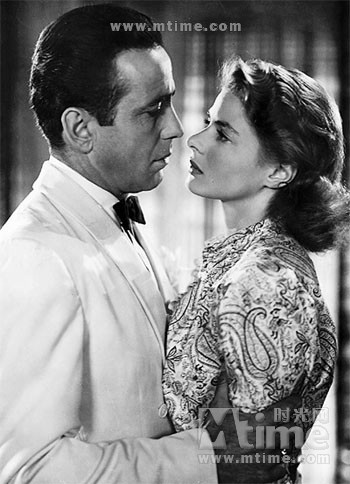

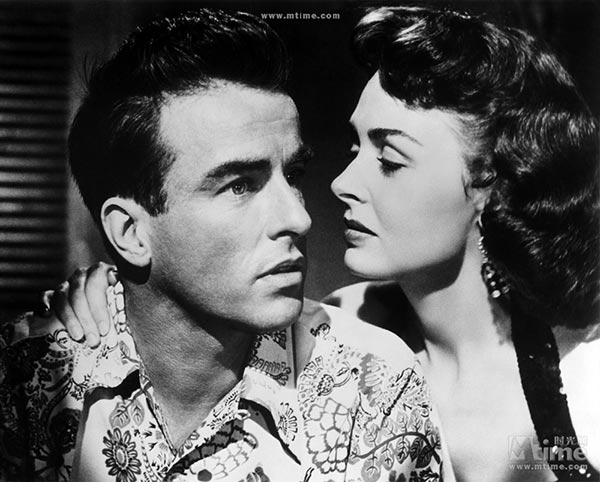

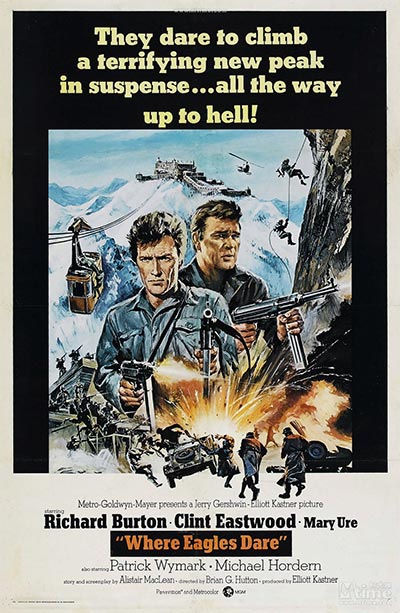
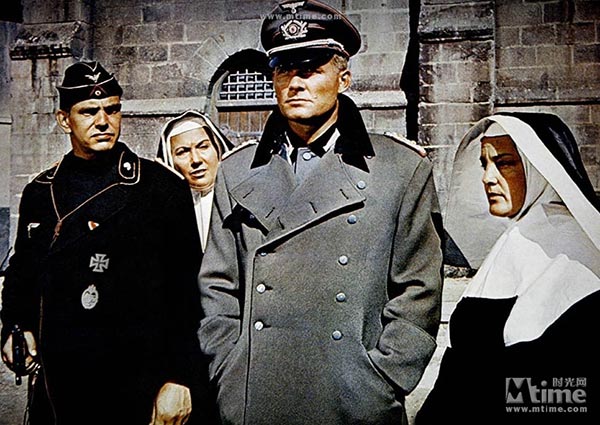
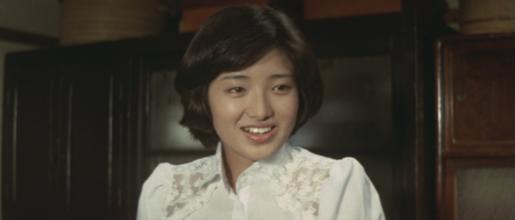
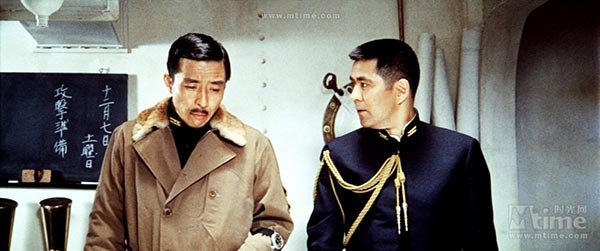

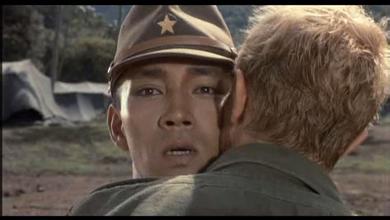
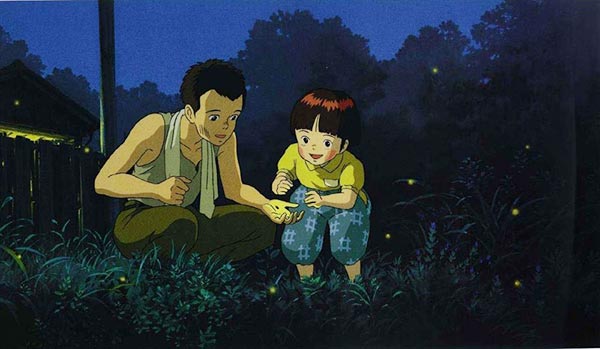
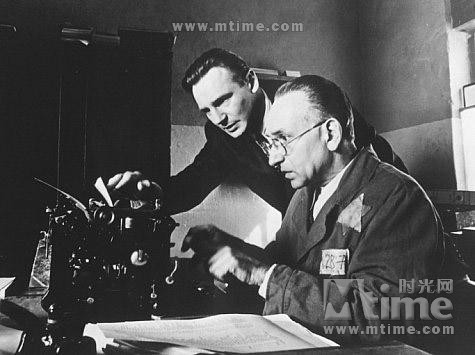
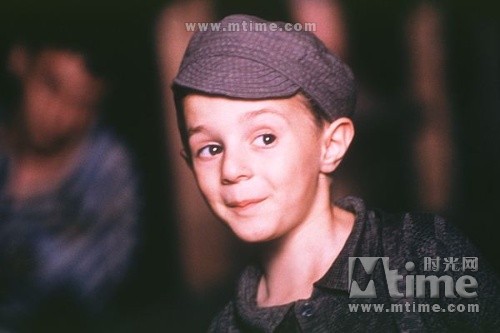
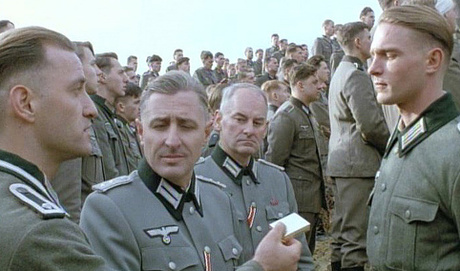
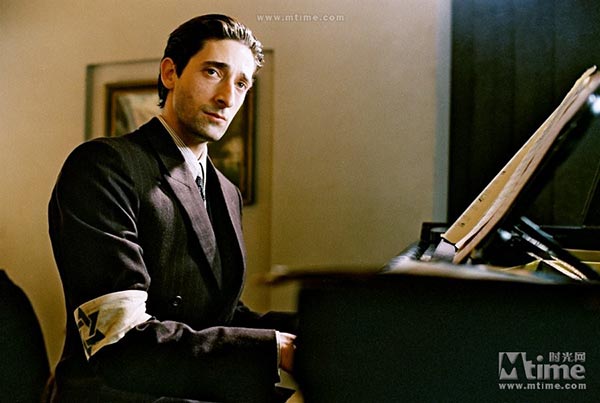
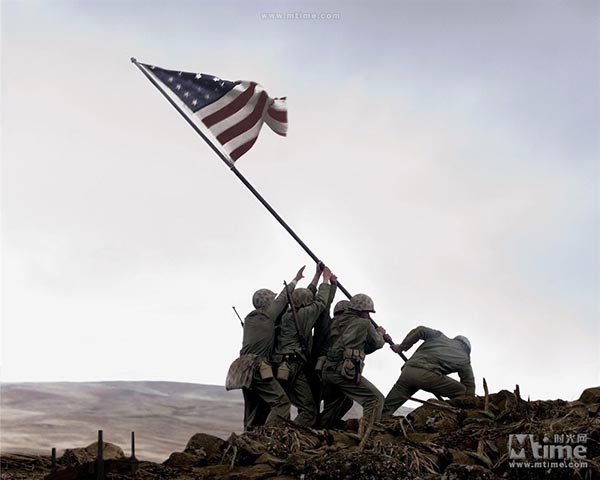
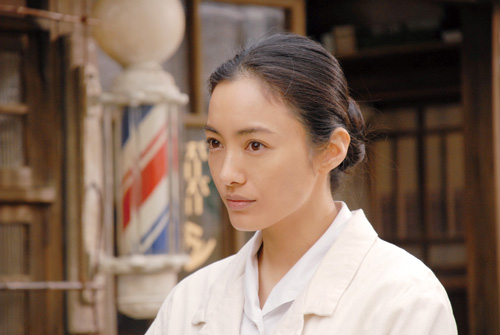
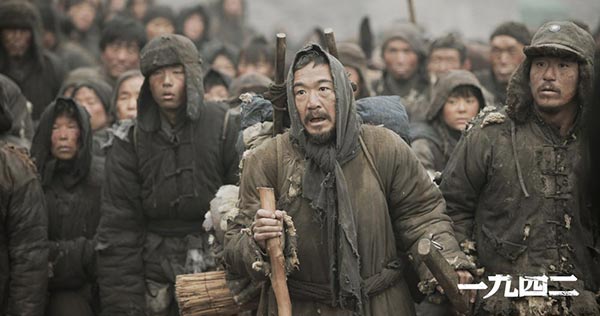
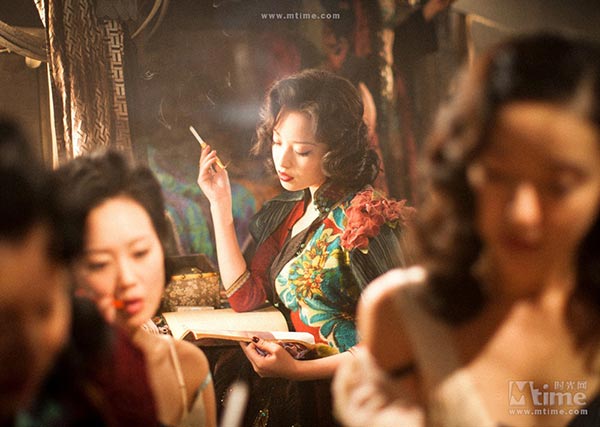
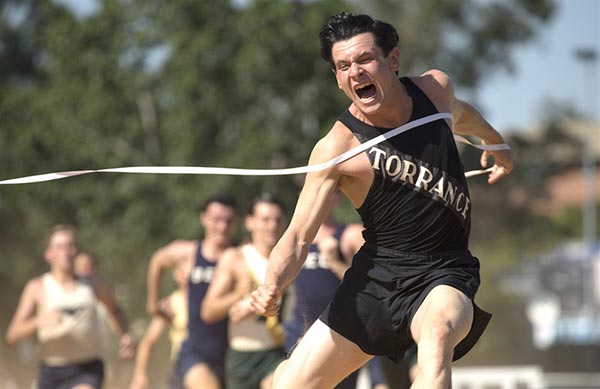
World War II films from different eras
Editor:李莎宁
Source:中国日报网
Updated:2015-08-28 09:44:52
Source:中国日报网
Updated:2015-08-28 09:44:52
Special
Contact
Welcome to English Channel! Any suggestion, welcome.Tel:0731-82965627
lisl@rednet.cn
zhouqian@rednet.cn











